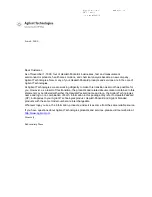
Section VII
Trouble-Shooting Guide
006-0006885 08/14/18
Rev H
45 of 48
MINV-4000-1U-28 Guide www.synqor.com
▪ Since the MINV no longer draws current from the DC INPUT, the voltage drop across the DC
INPUT cable goes back to zero volts.
▪ After a while, the MINV decides the DC INPUT voltage is back within its proper range, and
begins to draw a current from the DC INPUT.
▪ The cycle above repeats itself for a total of three times, at which point the MINV stops
trying to draw power from the DC INPUT for one minute. After this one minute another set
of 3 cycles are repeated, followed by another stop for one minute, and so on.
The solution to this problem is to make sure that the cable has wires of sufficient diameter, or
“gauge” for the length of cable. The longer the cable, the bigger diameter the wire should have.
See the section “Power Cable Wire Size” for recommended cable wire sizes.
• The MINV fails to operate through an input voltage step
When performing an input voltage step, it should be taken into consideration that the operation
of the MINV-4000 may be affected. If the input voltage is being stepped down to no less than
20 V, the full 4000 W load can be provided by the MINV-4000 without concern for system
operation. However, if the input voltage is being stepped down to less than 20 V, the MINV-
4000 may exhibit undesired performance.
Instantaneously stepping the input voltage from greater than 28 V to less than 20 V may
cause the MINV-4000 to detect a fault and shut down its output. Under this same step-down
condition, the MINV-4000 may continue to operate but with an increase in input ripple current
until the input voltage is raised above 18.5 V.
There are three ways to avoid a potential interruption in system operation when operating
the MINV-4000 under this condition. They are as follows:
▪ Reduce the output power level to 3400 W or less, or
▪ Reduce the input cable length to 3 ft. or less, or
▪ Start with an input voltage that is less than or equal to 28 V




































